JEFFERSON, Thomas. Autograph letter signed ("Th:Jefferson") as President, to George Hay U.S. District Attorney in Richmond, in charge of the prosecution of Aaron Burr, Monticello, 7 September 1807. 1 page, 4to (9¾ x 7¼ in.), integral blank with recipient's docket, folds neatly strengthened from the back, clean repaired tear to blank portion of left-hand margin . A HISTORIC CONFRONTATION OVER EQUAL RIGHTS UNDER LAW AND THE DOCTRINE OF EXECUTIVE PRIVILEGE: JEFFERSON RESPONDS TO A SUBPOENA AND FURNISHES AN EDITED TRANSCRIPT OF A KEY LETTER IN BURR'S DEFENSE A highly important letter relating to the trial of former Vice-President Aaron Burr, documenting Jefferson's assertion of Presidential control over critical information subpoened by Chief Justice John Marshall in this highly visible Federal prosecution. The incident, which could have provoked a struggle between the two branches of government, may constitute ONE OF THE EARLIEST PRECEDENTS FOR THE SUBSQUENTLY DEVELOPED CONCEPT OF EXECUTIVE PRIVILEGE. Writing to Hay, the Federal prosecutor in the Burr case, Jefferson responds to an unprecedented subpoena duces tecum issued to him at Monticello which called upon him to produce a letter sought as evidence by Burr's defense. While carefully avoiding acknowledging receipt of the controversial subpoena itself, Jefferson writes: "Understanding that it is thought important that a letter of Nov. 12. 1806. from General Wilkinson to myself, should be produced in evidence on the charges against Aaron Burr depending in the District court now sitting in Richmond, I send you a copy of it [not present], omitting only certain passages the nature of which is explained in the certificate subjoined to the letter [ not present ]. As the attorney for the United States be pleased to submit the copy and certificate to the uses of the court. I salute you with great esteem and respect." After the nearly disastrous election crisis of 1800, Burr had served as Vice-President during Jefferson's first term. In 1805, under indictment for murder in the death of Alexander Hamilton as a result of their celebrated duel, Burr travelled into the western territories. There, in one of the most mysterious episodes of American history, he projected a scheme to instigate war with Spain and seize control of frontier lands to found an independent nation. His grandiose scheme unraveled in 1806 when a fellow conspirator, General John Wilkinson (1757-1825), Governor of Louisiana, revealed the plot. Burr was arrested in the Alabama backwoods in February and consigned for trial in Federal District Court in Richmond. The Federal prosecutor, George Hay (1765-1830), was a committed Republican whom Jefferson had appointed to his post. But the trial venue had one key drawback: as each of the Supreme Court's six judges also served in the nation's six circuit courts, presiding in the Virginia Circuit Court was Chief Justice John Marshall an ardent Federalist, appointed by John Adams Marshall's conduct of the trial, which opened on May 22, was perceived by Jefferson from the outset as partisan at best and perhaps part of a pervasive Federalist effort to seriously embarrass him and his administration. The prosecution's chief witness was Burr's former co-conspirator, Wilkinson. In his special message to the Senate and House on 22 January 1807, detailing steps taken by his administration to suppress the Burr conspiracy, Jefferson had referred to letters from Wilkinson to himself communicating critical information about Burr's nefarious plans (see Messages and Papers of the President , 1:412-417). During testimony before the grand jury considering Burr's indictment on the charge of high treason (for "assembling an armed force, with design to seize the city of New Orleans") Burr's lawyers insisted that Wilkinson's letters to the President, and other documents, might be material to Burr's defense and requested that Judge Marshall issue a subpoena duces tecum to be served on President
JEFFERSON, Thomas. Autograph letter signed ("Th:Jefferson") as President, to George Hay U.S. District Attorney in Richmond, in charge of the prosecution of Aaron Burr, Monticello, 7 September 1807. 1 page, 4to (9¾ x 7¼ in.), integral blank with recipient's docket, folds neatly strengthened from the back, clean repaired tear to blank portion of left-hand margin . A HISTORIC CONFRONTATION OVER EQUAL RIGHTS UNDER LAW AND THE DOCTRINE OF EXECUTIVE PRIVILEGE: JEFFERSON RESPONDS TO A SUBPOENA AND FURNISHES AN EDITED TRANSCRIPT OF A KEY LETTER IN BURR'S DEFENSE A highly important letter relating to the trial of former Vice-President Aaron Burr, documenting Jefferson's assertion of Presidential control over critical information subpoened by Chief Justice John Marshall in this highly visible Federal prosecution. The incident, which could have provoked a struggle between the two branches of government, may constitute ONE OF THE EARLIEST PRECEDENTS FOR THE SUBSQUENTLY DEVELOPED CONCEPT OF EXECUTIVE PRIVILEGE. Writing to Hay, the Federal prosecutor in the Burr case, Jefferson responds to an unprecedented subpoena duces tecum issued to him at Monticello which called upon him to produce a letter sought as evidence by Burr's defense. While carefully avoiding acknowledging receipt of the controversial subpoena itself, Jefferson writes: "Understanding that it is thought important that a letter of Nov. 12. 1806. from General Wilkinson to myself, should be produced in evidence on the charges against Aaron Burr depending in the District court now sitting in Richmond, I send you a copy of it [not present], omitting only certain passages the nature of which is explained in the certificate subjoined to the letter [ not present ]. As the attorney for the United States be pleased to submit the copy and certificate to the uses of the court. I salute you with great esteem and respect." After the nearly disastrous election crisis of 1800, Burr had served as Vice-President during Jefferson's first term. In 1805, under indictment for murder in the death of Alexander Hamilton as a result of their celebrated duel, Burr travelled into the western territories. There, in one of the most mysterious episodes of American history, he projected a scheme to instigate war with Spain and seize control of frontier lands to found an independent nation. His grandiose scheme unraveled in 1806 when a fellow conspirator, General John Wilkinson (1757-1825), Governor of Louisiana, revealed the plot. Burr was arrested in the Alabama backwoods in February and consigned for trial in Federal District Court in Richmond. The Federal prosecutor, George Hay (1765-1830), was a committed Republican whom Jefferson had appointed to his post. But the trial venue had one key drawback: as each of the Supreme Court's six judges also served in the nation's six circuit courts, presiding in the Virginia Circuit Court was Chief Justice John Marshall an ardent Federalist, appointed by John Adams Marshall's conduct of the trial, which opened on May 22, was perceived by Jefferson from the outset as partisan at best and perhaps part of a pervasive Federalist effort to seriously embarrass him and his administration. The prosecution's chief witness was Burr's former co-conspirator, Wilkinson. In his special message to the Senate and House on 22 January 1807, detailing steps taken by his administration to suppress the Burr conspiracy, Jefferson had referred to letters from Wilkinson to himself communicating critical information about Burr's nefarious plans (see Messages and Papers of the President , 1:412-417). During testimony before the grand jury considering Burr's indictment on the charge of high treason (for "assembling an armed force, with design to seize the city of New Orleans") Burr's lawyers insisted that Wilkinson's letters to the President, and other documents, might be material to Burr's defense and requested that Judge Marshall issue a subpoena duces tecum to be served on President

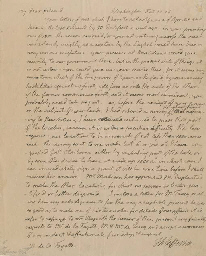
.jpg)

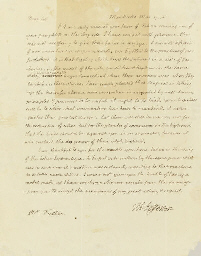
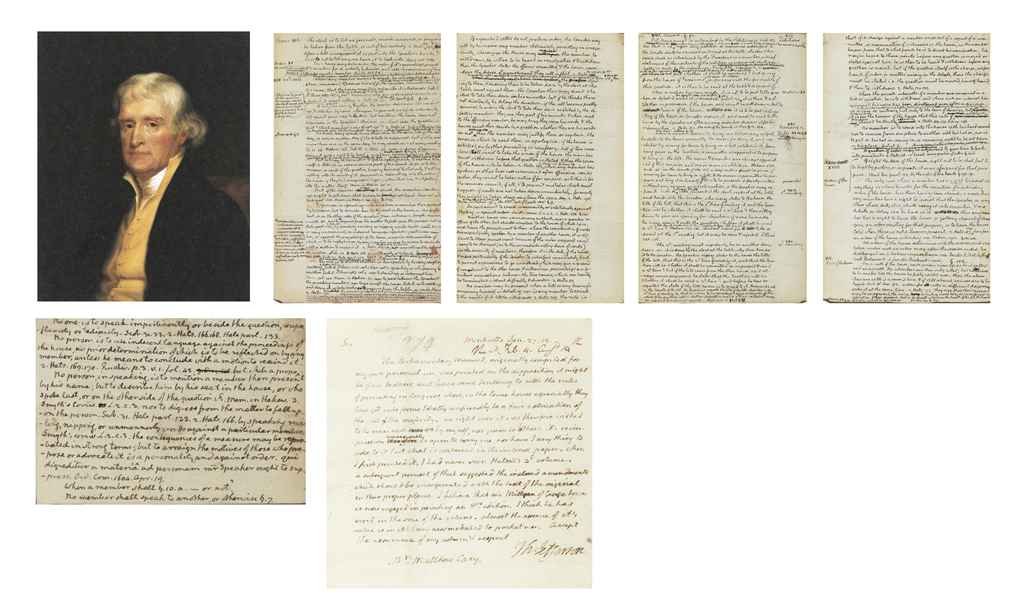


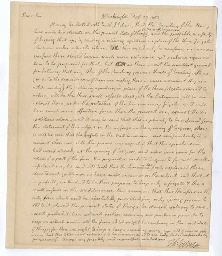
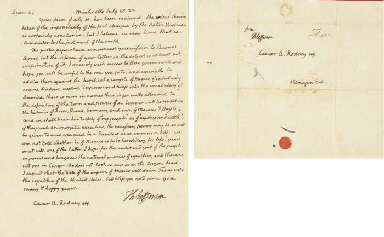

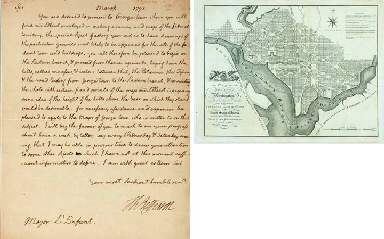

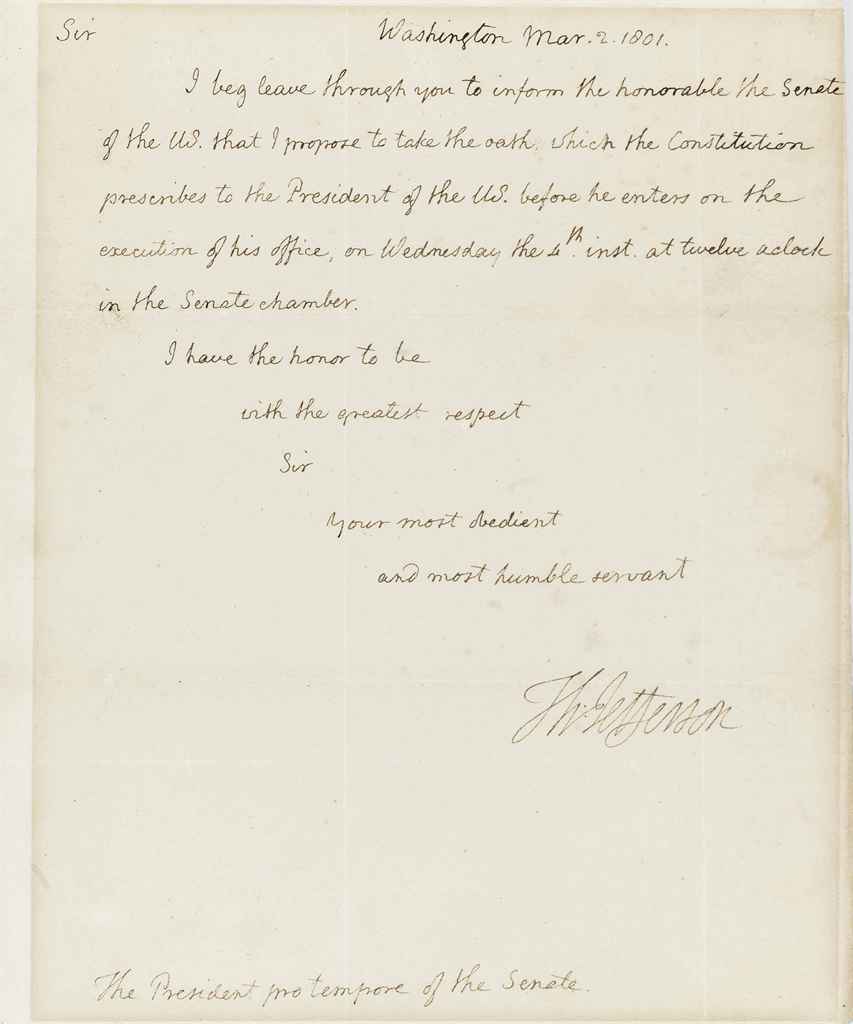

Try LotSearch and its premium features for 7 days - without any costs!
Be notified automatically about new items in upcoming auctions.
Create an alert